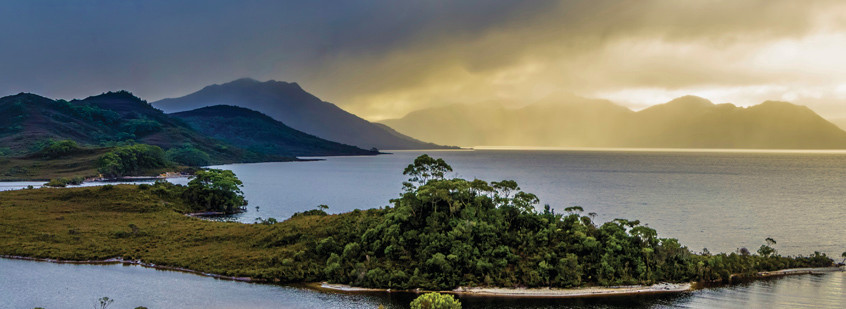Tasmania’s renowned World Heritage-listed wilderness areas are currently threatened by a duumvirate consisting of the state’s Liberal governments as well as a voracious tourism industry, according to key conservation supporters.
In Wild issue 144, we shared highlights from the Reimagining the Visitor Experience of Tasmania’s Wilderness World Heritage Area document, which was predominantly a product of the Tourism Industry Council of Tasmania (TICT) that identified opportunities for commercial tourism developments should regulations be changed to allow them.
Since then, the government has received 37 proposals following a call for expressions of interest from tourism groups, the details of which have not been publicly announced.
After having been leaked to the media, a draft management plan for Tasmania’s World Heritage wilderness has been released for public comment and this has caused a flurry of media commentary right across the political spectrum.
If approved, this management plan will see the ‘wilderness’ zone reclassified under ‘remote recreation’with fewer restrictions on activities that may occur there, thereby allowing development to occur in what many would consider to be (at least close to) pristine natural environments.
Geoff Mosley, council member for the IUCN and past CEO of the Australian Conservation Foundation believes that the current situation has occurred as a result of a state government that is “strongly oriented towards commercial tourism”.
“How is it that the State with several of the finest wilderness areas in the world is trending towards providing inadequate protection for them?” Mosley asks.
The only justification Mosley sees in the draft plan, is a half-baked attempt to imply Indigenous Australians may take issue with the term ‘wilderness’ in reference to their traditional territories.
“The only attempt in the draft plan at providing a justification for the elimination of the wilderness areas is a misguided attempt to suggest that the Aboriginal traditional owners might be offended if they were maintained saying ‘The use of the term ‘wilderness’ to describe the Tasmanian Wilderness WHA is problematic for Aboriginal people’.”
Yet, in direct conflict with this statement, the Tasmanian Aboriginal Corporation has publicly stated it had not been consulted at all and was in fact refused permission to even see the draft management plan prior to its public release.
The Tasmanian National Parks Association’s Nick Sawyer says the development and implementation of this management plan has thus far been conducted in stark contrast to the previous one, developed in 1999.
“They’ve turned the process back to front,” Sawyer said. “We should start with planning which takes into account the full range of issues involved in the management of one of the world’s great natural areas including market research. Only then should proposals for specific activities and developments be considered.
“In the past, the emphasis in national park planning has been on consultation and consensus. The current approach ignores both in its haste to facilitate intrusive activities and developments in some of the most remote parts of the TWWHA.”
With regard to its process and the way it has sought public consultation thus far, the Tasmanian government certainly appears to be willfully promoting the priorities of the tourism industry above those of the environment and of local people.
In an interview with Wild, former Greens leader Bob Brown highlighted the fact that it’s the World Heritage listing that makes the area particularly valuable for tourism, saying: “The truth is that the world heritage brand has become a real drawcard being sought after by big business”.
“It’s a premium brand that draws people to Tasmania from Berlin, Beijing and Boston and those businesses don’t care what happens to the land so long as they capitalise on the brand itself.”
Conservation and sustainable tourism advocates across the board have agreed that tourism developments would be much more successful if planned outside of World Heritage areas, and that the strategy of developing within them can only be described as myopic.
“Locating accommodation outside the boundary of the Tasmanian Wilderness World Heritage Area (TWWHA) is generally more practical, and more beneficial to surrounding communities, as well as protecting the values of the reserve, which is what the visitors come to experience,” said Sawyer. “Likewise many adventure tourism activities – where the emphasis is on adventure rather than nature – are best located outside reserves.”
For those interested in conservation, both commercial and political interests in the TWWHA can only appear toxic and aggressive, but with the management plan open to public comment until March 22 there is still time for more voices to be heard on the matter.
Read our full coverage of what’s going on in Tasmania’s wilderness areas in the upcoming issue of Wild, 146 – available in March. Subscribe now to ensure your copy arrives on time.


